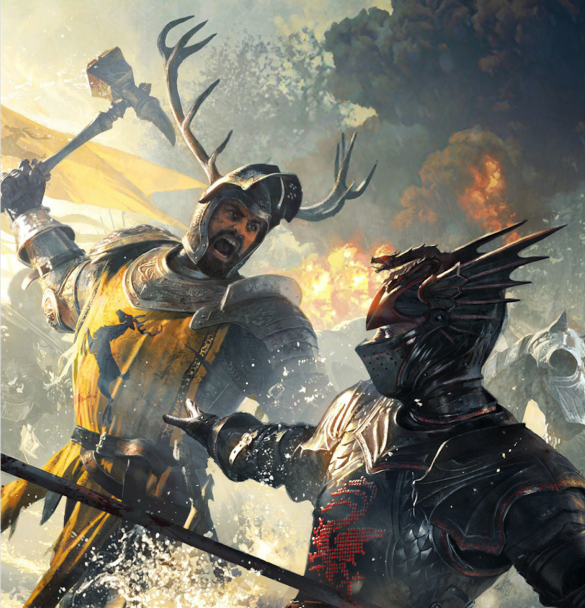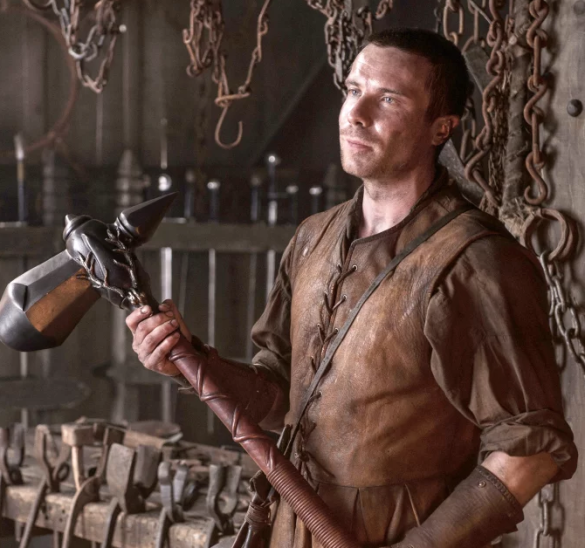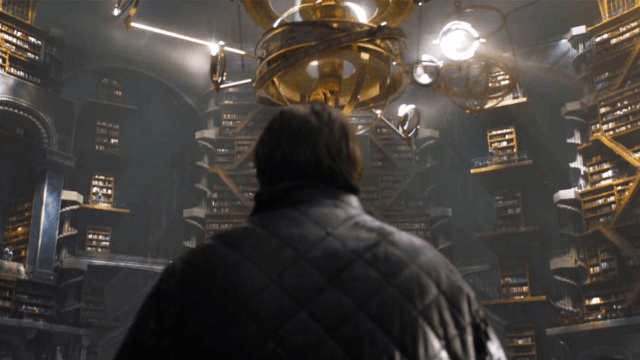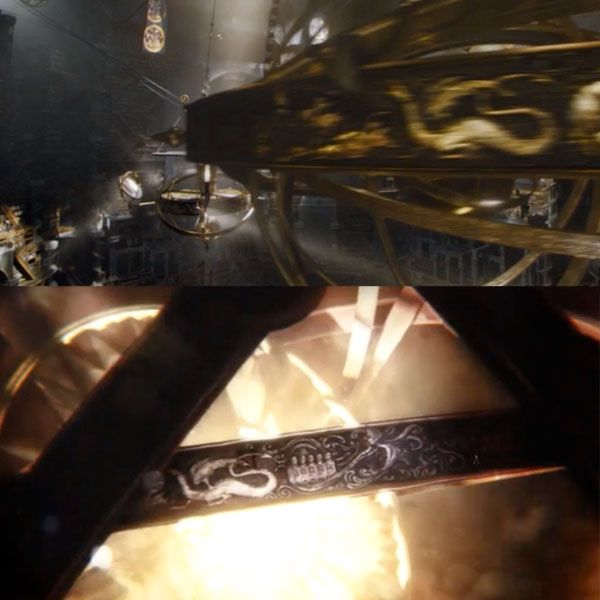Disclaimer: There are no spoilers in this article. I have no knowledge of what is to transpire in this story. Any views or content expressed are solely personal theories, opinions and insights.
So, here we are. The beginning of the end is less than one week away. This awe-inspiring, magical journey that has been part of our lives for the better part of the last decade — it all comes to an end in just six short episodes. It’s hard to imagine such an unbelievably rich and complex story actually coming to a singular endpoint, but that is what is about to happen, so it’s time to get caught up on everything that should be top of mind as we head into the final season. Heads up, this post is long, so don’t try to rush few it in a few minutes. This is the end of a saga, so give it the time it deserves : )
Targaryens Unite at Dragonstone
For nearly 5,000 years, The Targaryens lived in Old Valyria, capital city of the Valyrian Freehold, which consumed almost the entire continent of Essos. Approximately 400 years ago, The Doom occurred, obliterating Old Valyria and forcing the few remaining Targaryens to migrate westward. Fleeing their homeland, a select few Targaryens arrived at a small island off the coast of Westeros, where they would go on to build the great castle of Dragonstone. It was from this castle that Aegon Targaryen, alongside his two sisters, would plot their conquest of the kingdoms of Westeros (which at that point were independent kingdoms with separate rulers). After living the Targaryens lived at Dragonstone for about 100 years, Aegon and his sisters launched Aegon’s Conquest, about 300 years ago, as they rode their three dragons across Westeros and eventually united all the kingdoms under one king. Aegon Targaryen would be the first Targaryen king to rule over Westeros, and his Targaryens descendents would rule over the continent for the next 300 years, until Robert’s Rebellion.
Understanding that Dragonstone was home to the last remaining Targaryens and their dragons after they fled Valyria, and that it was from this castle that Aegon plotted his conquest of Westeros, makes Daenery’s arrival to this castle in the first episode of Season 7 an incredibly powerful moment. To no surprise, like Aegon before her, Dany spends much of season seven plotting her strategy to conquer and unite the lands of Westeros, focusing on the removal of Cersei Lannister from the Iron Throne. To start the season, Dany and her advisors (primarily Tyrion and Varys), have assembled what appears to be an unstoppable force. She already had the powerful armies of the Unsullied and Dothraki, as well as three full-grown dragons at her disposal — likely enough firepower to conquer Westeros in short order. But Dany’s army got even stronger in season seven as she forged an alliance with Ellaria Sand and the Sand Snakes of Dorne, while securing some of Iron Island the naval forces through an alliance with Theon and Yara Greyjoy. And let’s not forget that Ser Jorah Mormont returns to Dany’s side at Dragonstone after his greyscale disease is cured at the Citadel by none other than Samwell Tarly (who served under Jorah’s father, Lord Commander Jeor Mormont, when Samwell was still a brother of the Night’s Watch).
But the various key players from many of the Great Houses uniting on Dragonstone would not end there; there would be one more character to join, and though unknowing, he too would be a Targaryen. After receiving a raven from Samwell Tarly who had learned that Dragonstone was built atop a mass of dragon-glass (which can kill White Walkers), Jon Snow travels to Dragonstone in an effort to try and secure dragon-glass and convince Dany to join the Northern forces in the Great War to Come. However, Dany has other ideas and is focused on winning the Iron Throne. Though he refuses her request to bend the knee, Dany does ultimately agree to allow Jon to mine for dragon-glass, and in doing so, Jon discovers ancient cave images from thousands of years ago which depict the First Men and Children of the Forest banding together to fight the White Walkers — a chilling reminder of the Long Night and the the threat of darkness has been present since near the beginning of time. Though Jon is starting to win over Dany, she is still unconvinced of the White Walker’s existence, as is most of Westeros, and Jon soon realizes he must find a day to prove to Dany and the rest of Westeros the real threat that everybody should be focused on.
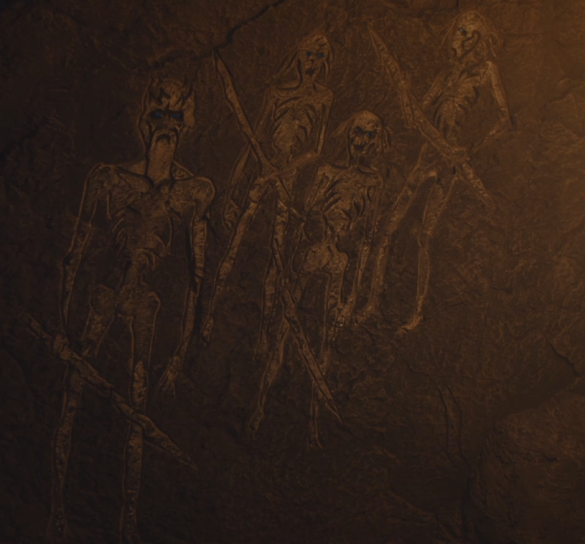
The Dream Team Goes Beyond the Wall
Once again, Jon shows his heroism and understanding of the risks he must take to preserve humanity as he decides to lead a raid beyond The Wall to capture a wight (reminder: the wights comprise the army of the undead, led by the White Walkers and Night King). He is join by a cast of some of my absolute favorite characters who come together through a random (or perhaps not so random) series of events — I like to call them The Dream Team.
The Dream Team starts to take form when Ser Jorah, who recently joined Daenerys at Dragonstone after being cured by Samwell at The Citadel, joins Jon and his trusted advisor, Davos Seaworth. But before they head into the deep North, Tyrion must meet with his brother, Jaime, to ensure that they will have an audience with Cersei if they are able to successfully capture a wight as proof of the army of the dead. Ser Davos offers to travel to King’s Landing alongside Tyrion, and while Tyrion is off meeting with Jaime, Ser Davos’ true intentions for returning to King’s Landing are revealed as he seeks out Gendry, Robert Baratheon’s bastard son who Davos saved many seasons earlier. All the way back in season three, it was Gendry who was being held at Dragonstone by Stannis Baratheon and the Red Priestess Melisandre, who used his King’s Blood (remember, he was the son of King Robert Baratheon), and eventually planned to sacrifice him to the Lord of Light. Not agreeing with Melisandre’s blood magic and unwilling to stand by while the innocent Gendry was sacrificed, Ser Davos defies Stannis and risks his life to set Gendry free. The last we saw of Gendry, he was rowing away from the shores of Dragonstone in a tiny rowboat, and it is not until all these years later that Davos rediscovers him, still working as a smith in the streets of King’s Landing. Without hesitation, Gendry joins Davos and volunteers to join the Dream Team in their quest beyond The Wall. It is worth pointing out that unlike most characters, Gendry does not choose to fight with a sword, but rather a warm hammer. Going back many years, it was his father, Robert Baratheon, who is described as a legendary warrior who swung a powerful war hammer (with which he defeated Rhaegar Targaryen, Jon Snow’s father, during Robert’s Rebellion). It’s also worth pointing out that given Jon’s newfound stockpile of dragon-glass, he will need a skilled smith to help craft White Walker-killing weapons, and Gendry may likely play this important role in the final season.
Elsewhere, the remaining Brotherhood without Banners, Beric Dondarrion and Thoros of Myr, unite with The Hound, bringing together three of the show’s greatest characters. Despite his extreme fear of fire, The Hound starts to believe in Lord of Light, after he sees in the fire the army of the dead marching south, past Eastwatch by the Sea (the most eastward castle of the Night’s Watch). After seeing this, The Hound agrees to venture north with Beric and Thoros, to fulfill their purpose in the Great War to Come. At the same time, Jon, Gendry, Davos and Jorah also head to Eastwatch by the Sea, where Tormund Giantsbane, who had been manning the castle for Jon, reveals to Jon and company that he’d been holding prisoner Beric, Thoros and the Hound after their capture.
In this moment, many characters are reunited which reveals a great mistrust amongst many of them. Gendry tells Jon not to listen to anything Beric and Thoros have to say, since they sold Gendry to the Red Priestess, Lady Melisandre, all the way back in season four. Similarly, Tormund does not trust Ser Jorah, since his father was Lord Commander of the Night’s Watch and battled Tormund’s people, the Wildlings, for many years. Despite all the history and many of these characters having been on opposite sides at times, Beric and Jon remind the group that none of this matters and that they all share a common cause — to serve their purpose in the Great War to Come as the Lord of Light commands. And just like that, their differences become a thing of the past as the Dream Team unites to head north of The Wall.

As they march into the frigid depths of the deep North, the group comes upon a band of wights, led by their White Walker master. As a small battle ensues, Jon eventually eliminates the White Walker, which causes all the other wights to fall like dominos. This was not the first time we have seen a White Walker killed, but it was the first time we were exposed to the idea that if you kill a White Walker, the wights that White Walker has turned also perish. We know that the army of the dead numbers in the hundreds of thousands, so the realization that you need not kill each wight individually, but rather you can take them out in much bigger numbers by killing a White Walker, is critical to know in the war to come. It also begs the question: if killing a White Walker ends the existence of all the wights that White Walker has turned, does killing the Night King end all of the White Walkers he has created? If so, and killing the Night King destroys all White Walkers, which then destroys all wights, then killing the Night King could bring an end to the entire army of the dead.
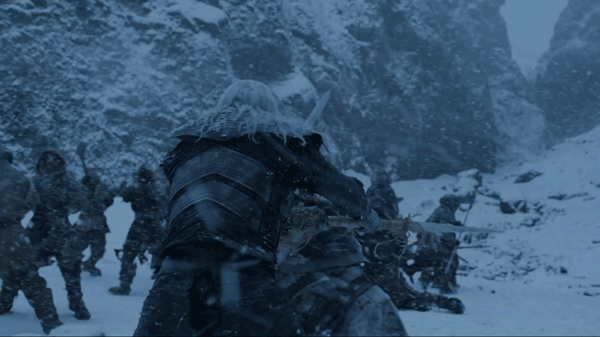
But this battle was a mere scuffle compared to the fight that lays ahead for the Dream Team. As they continue deeper into the North, they are eventually discovered by a massive army of the dead, led by several more White Walkers, and the appearance of the Night King himself. Despite being vastly outnumbered, the Dream Team fights valiantly, and destroys hundreds of wights — a reminder that we are watching an assemble of some of the greatest warriors Westeros has ever known. But eventually, the men are outnumbered and their deaths appear imminent — until Daenerys arrives with her dragons, and for the first time, we see a direct face-off between Ice and Fire. Remember, this entire story is entitled A Song of Ice and Fire, and seeing these powerful elements go toe to toe is a signal that the end is near. Dany and her dragons burn the wights by the thousands, but not before The Night King lands an icy spear into one of Dany’s dragons, Viserion, sending it plummeting to its death.
And just like that, the tables are dramatically turned — Daenerys can only helplessly watch her beautiful dragon fall from the sky like a plane that has been shot down out of the air. Her other two dragons let out a painful cry as they watch their sibling fall to its death. Seeing this, Jon Snow advances for the Night King, who attempts to take down Drogon, the dragon that Daenerys and the others are aback. Jon is attacked by more wights and pulled underwater, and Daenerys is forced to abandon Jon, though reluctantly, in order to save her two remaining dragons.
When Jon does reemerge from the water, he is frozen stiff and appears to have no chance at fighting off the new pack of wights that are headed his way. Not to fear, Uncle Benjen (Ned’s brother) is here. Fighting with his flaming ball-and-chain, Benjen takes out a bunch of the wights and buys Jon just enough time to escape back to Eastwatch. Jon had not seen his Uncle Benjen since the very first season, when they were together at Castle Black (remember, Jon was very close with Uncle Benjen and he was a big part of the reason why Jon joined the Night’s Watch in the first place). When Benjen went missing north of The Wall in the first season, Jon tried to go after him. Ironically, Benjen’s disappearance north of The Wall so many seasons ago is what would turn him into what he is today, and set him on the path to save his nephew when it really counted. Just another ingenious example of how Thrones sets a character on a path at a certain point in time, for them not to be seen for many years, and to ultimately reemerge in the distant future to play a major role. Sadly, after all these years, the reunion between Jon and Uncle Benjen lasted only a couple of seconds, but Uncle Benjen served his purpose and saved Jon when it counted most.
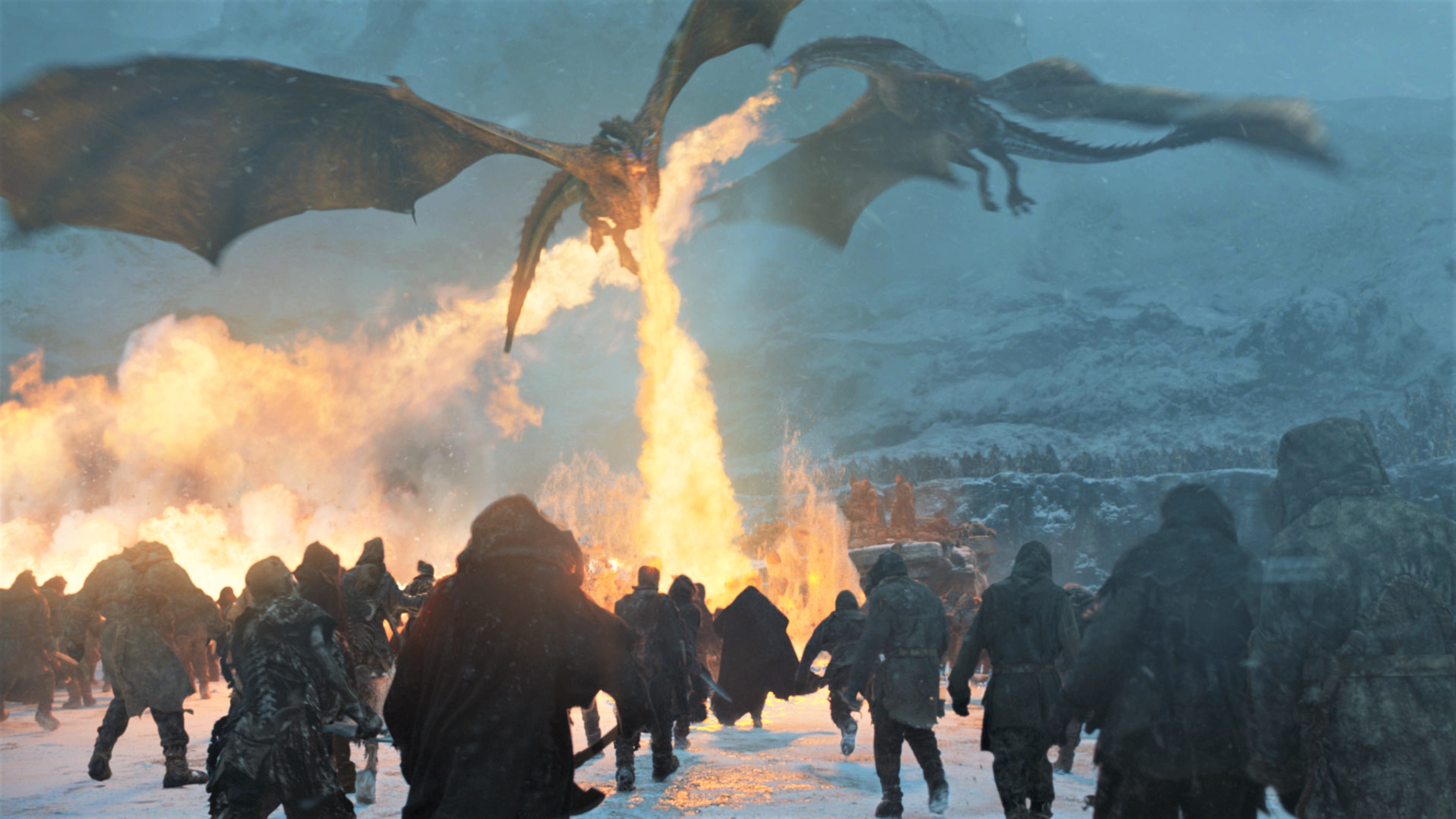
We also must say RIP to one of the story’s greatest (even if not most popular) characters, Thoros of Myr, who does not make it out alive. He too served his purpose, bringing Beric Dondarrion back to life many times over the years. With Thoros finally gone, Beric is likely now on his last life, again a reminder that the end is near.
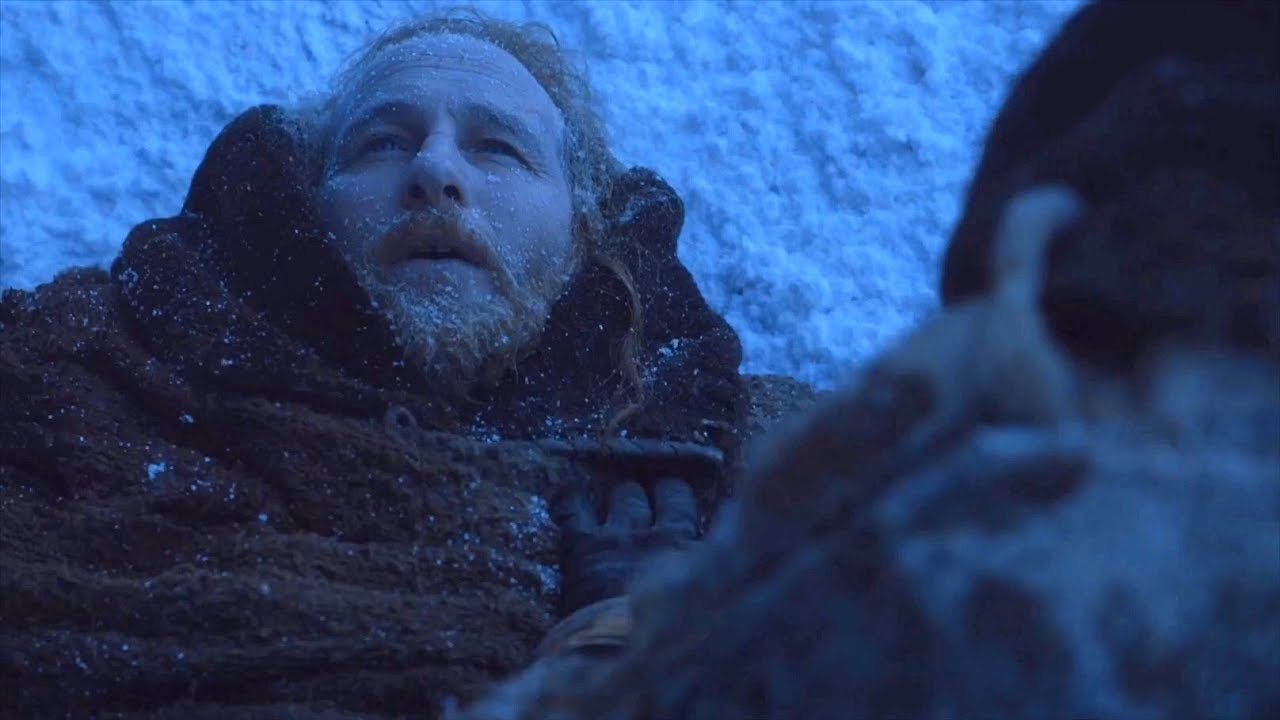
A Winterfell Reunion
As Jon departs Winterfell to meet with Daenerys and eventually go north beyond The Wall, he leaves Sansa to look after Winterfell and maintain order in the North. Had he stayed just a little while longer, he would have found out his true identity, as it was not long after he left that Bran, who knows the truth of who Jon is, returns to Winterfell. Only Bran is no longer Bran — he is now the Three-Eyed Raven, seemingly devoid of all human emotion or feeling. After years of travels throughout the North without having any contact with any Stark family member, Bran finally returns home to Winterfell to be reunited with sister, Sansa. What would be expected to be an emotional and heartfelt reunion was anything but; Bran lacks the human emotion to even hug her, as he tells her how he can remember what it felt like to be Bran, but now he remembers so much else… He even dismisses Meera, who had been traveling with him for the last several years, who lost her brother, Jojen, and risked her life many times to keep Bran alive. What’s clear is that Bran is completely gone at this point, consumed by his all-knowingness, and we will likely never see him again.
The Stark sibling reunion continues from there, as Arya too finally makes her way back to Winterfell after a harsh and long journey. Like Bran, she returns home as a totally different person, no longer a young and innocent girl, but now a hardened assassin trained by the Faceless Men. While Arya and Sansa are happy to see one another after all these years, their differences and distrust quickly reemerge. It is important to remember that Arya and Sansa did not get along when they were younger, and one of Arya’s last memories of Sansa was her older sister sucking up to Prince Joffrey and the Lannisters in an attempt to become princess. Years later, Arya believes that Sansa has not defended the honor of their brother, Jon, and that Sansa has again made a play for power as the acting Lady of Winterfell.
Conversely, Sansa does not recognize the sister that has returned home, and starts to believe that perhaps Arya has intentions of killing her. Baelish, who has been hanging around at Winterfell, does not miss his opportunity to capitalize off this discord and attempts to strengthen his position by driver a further wedge between the sisters. Knowing that Arya has been following him, he plants an old note that Sansa had sent back to Winterfell all the way back in season one, when she was being held by Cersei in King’s Landing. In the note, Sansa notes that Ned has been a traitor and urges her family to pledge fealty to the Lannisters. What’s not clear from reading this note is that Sansa was forced to write this note under duress, and Baelish purposely plants this note for Arya to find, in an attempt to further Arya’s distrust and hatred for Sansa. At the same time, Baelish speaks with Sansa and furthers the idea that Arya has perhaps returned to Winterfell to kill her so that she can become the lady of Winterfell. Baelish’s plot dates all the way back to season one and is incredibly intricate — see the bottom half of this episode recap which provides a lot more detail about what Baelish went through to set up this scheme.
Throughout several episodes, it appears as though Baelish’s schemes are working perfectly, leading up to a final scene where Sansa calls Arya into the great hall in front of all the Northern lords. Sansa, prepared to pass judgement, states “You stand accused of treason. You stand accused of murder.” All appears as though Baelish has pulled off another epic manipulation, and that Arya will pay the price, until Sansa looks over towards Littlefinger and adds “How do you answer to these charges…Lord Baelish?” The tables are quickly turned, and we realize that Sansa and Arya had actually been working together to outsmart Baelish. Littlefinger does all he can to beg Sansa for mercy, but his many years of lies, schemes and manipulation have finally caught up with him. He cannot talk his way out of this one, and though Sansa passes the judgement, it is Arya that plays executioner.
What’s interesting to note is the weapon she uses to take his life. All the way back in second episode of season one, an assassin almost takes Bran’s life, though Bran’s direwolf, Summer, jumps in to save him. At the time, Baelish tells the Starks that it was the Lannisters who sent the assassin, which is what sends Ned Stark to King’s Landing and ultimately leads to his death and many of the events that would follow. What we later find out is that it was not the Lannisters that sent this assassin, but rather Baelish himself, in an attempt to pit the Starks against the Lannisters (which he succeeded in doing). It was Baelish himself who equipped the assassin with the dagger, which ends up back in Baelish’s possession after the failed assassination attempt. All these years later, Baelish gives the dagger to Bran as a reminder of the man who attempted his life. In a later scene, Bran gives this dagger to Arya, telling her has no use for it. In his all-knowing wisdom, perhaps Bran already saw the future and knew Arya would use this dagger to kill Baelish, which is exactly what happened. Again, this is just another example of how Thrones does such a masterful weaving plot-points that span from the first season to the seventh. Baelish gives a dagger to an assassin to kill Bran; the assassination goes wrong and Baelish recovers the dagger; Baelish gives the dagger to Bran; Bran gives the dagger to Arya; all comes full circle as Arya uses this dagger to end the life of the all-cunning Littlefinger. RIP.
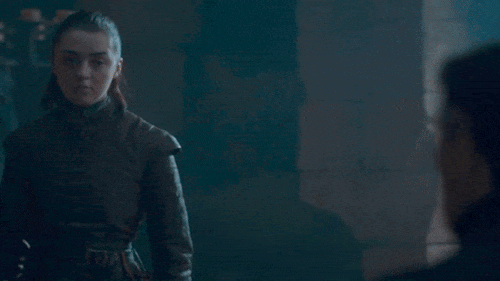
King’s Landing
Though King’s Landing and the Iron Throne is becoming increasingly less relevant in comparison to the Great War to Come, there is still quite a bit happening in the capital of Westeros, with Cersei at the helm. Just as Daenerys has made alliances with other great houses, Cersei too has forged a union with Euron Greyjoy, who strengthens her army with his naval prowess and strong fleet of ships. As a reminder, Euron is the uncle of Theon and Yara, and killed their father, Balon, back in season six, in an attempt to take control of their homeland, the Iron Islands. Theon and Yara fled the Iron Islands with their forces (and forged a union with Daenerys), while Euron sailed to King’s Landing to secure an alliance with Cersei.
This alliance quickly proves valuable for Cersei, as Euron strikes first blood in the war between Cersei and Daenerys. Carrying out a battle strategy devised by Tyrion, the Greyjoys are en route to escort Ellaria Sand and her three Sand Snake daughters back to their home of Dorne to rally the Dornish troops with the plan to lay siege to King’s Landing. However, Euron is one step ahead of them and shows his naval strength as he intercepts their ships with an attack in the night. His men kill two of the three Sand Snakes, while capturing the third, along with her mother, Ellaria Sand. As well, Euron captures Yara Greyjoy, while Theon jumps ship and leaves his sister behind.
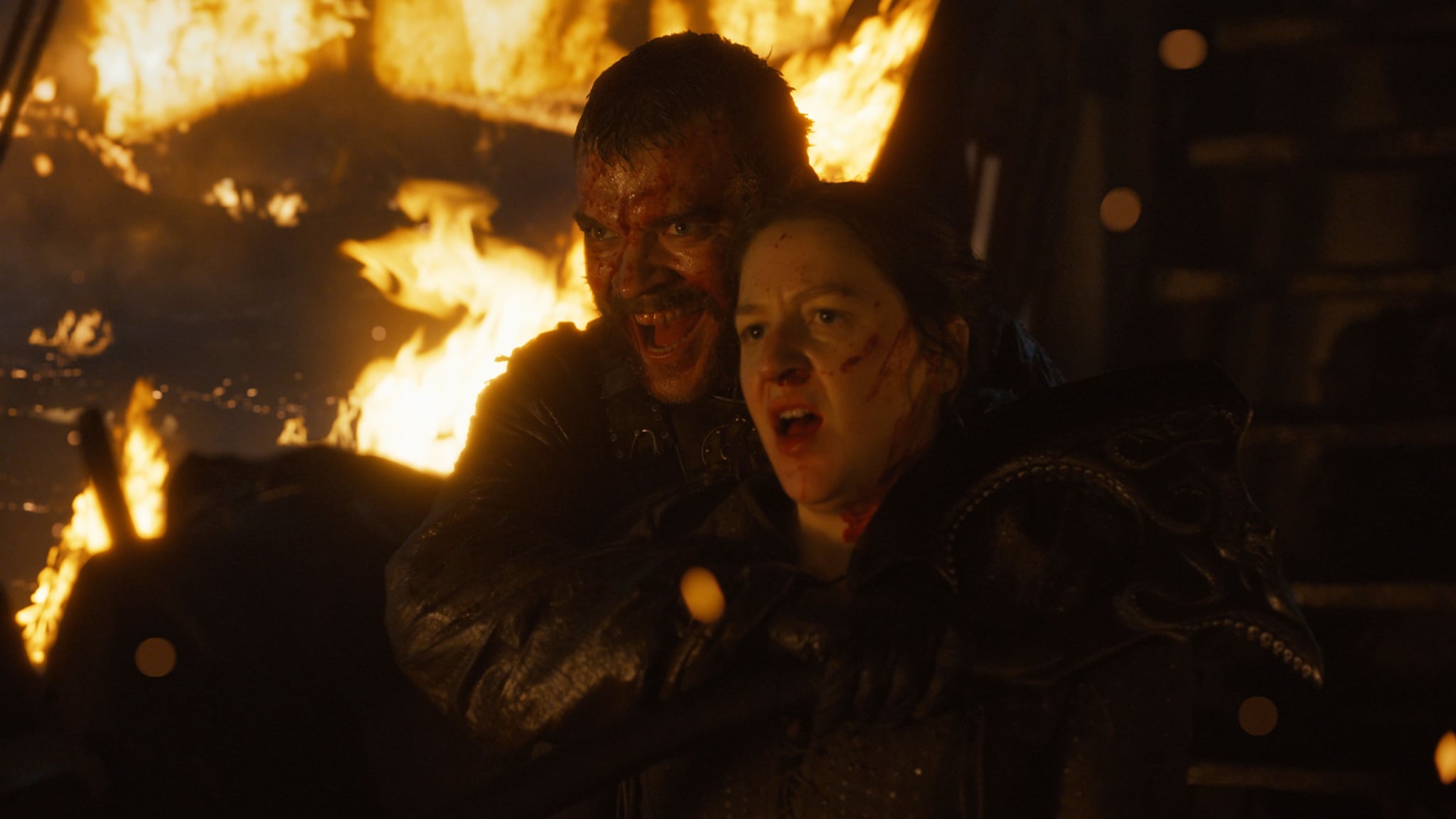
Euron returns to King’s Landing and delivers Cersei the gift he had promised her — Ellaria Sand along with her daughter, Tyene. Back in season five, it was Ellaria that killed Cersei’s daughter, Princess Myrcella, by kissing her and poisoning her with a poison called The Long Farewell. This was Dornish revenge for the Lannisters killing Elia Martell (Rhaegar Targaryen’s wife), during Robert’s Rebellion, as well as the more recent death of Oberyn Martell (aka The Red Viper) at the hands of The Mountain. Now, Cersei has her daughter’s murderer right where she wants her, and kisses Ellaria’s daughter, Tyene, with the same poison that Ellaria used on Myrcella. Only whereas Myrcella died far from Cersei, Ellaria will have to watch her daughter die right before her eyes as they are locked up in a cell together.
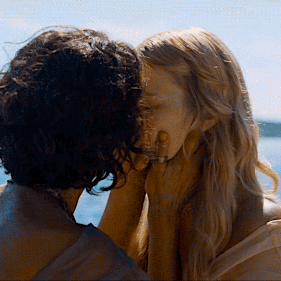
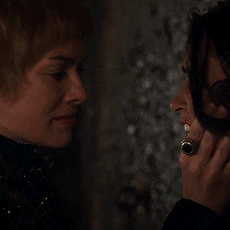
That said, we did not see Tyene die, which in the Thrones world, often hints that she may yet survive and have a role to play in the days to come. One prediction is that perhaps she will be saved by Bronn. Why you ask? Well, back in season five, when Bronn ventured south to Dorne alongside Jaime in an attempt to rescue Princess Myrcella, Bronn himself was poisoned with the same Long Farewell poison. And, as you will see in the video below, who was it that saved him? None other than Tyene Sand, the Sand Snake who he says is the most beautiful woman int he world. So, is it possible that Bronn will return to King’s Landing and save Tyene who is poisoned in a cell, much the way she did for him? Time will tell. Let’s not forget that Dorne is still a major part of Westeros and it’s hard to imagine the Dornish not having a role in the final season.
But Ellaria and Tyene were not the only captives Euron secured during his attack — they were just the gifts he presented to Cersei. But, he kept a gift for himself, Yara Greyjoy. It is unclear what his plans for her are, but in one of the final scenes of the season, Theon comes alive and is hellbent on saving his sister. In brutal hand-to-hand combat, he defeats one of the other Ironborn who was opposed to saving Yara, takes command of a small crew and sets sail to rescue Yara from Euron.
Dany Strikes Back
Back at Dragonstone, Daenerys has been letting Tyrion act as military strategist, only to find that his first two plans have backfired miserably. After losing several of her alliances as well as her naval fleet at the hands of Euron Greyjoy, Dany suffers a second defeat after Tyrion advises her to have the Unsullied attack Casterly Rock, the castle of the Lannisters. He believes that if they can take Casterly Rock, they will be in a stronger position to eventually take King’s Landing. However, the Lannisters are one step ahead of Tyrion’s plan, and while Dany sends her troops to attack Casterly Rock, the Lannisters have already pulled their forces from Casterly Rock and sent them to lay siege to Highgarden, castle of House Tyrell. While there is not much left of House Tyrell, besides Lady Olenna, Highgarden has the most fertile land in all of Westeros, as well as plenty of gold. While Dany’s forces are attacking an empty Casterly Rock, the Lannisters successfully sack Highgarden and all its riches. During this siege, Jaime kills Lady Olenna, but not before she admits to being the mastermind behind the death of his son, King Joffrey. Though many, including Cersei and Tywin Lannister, accused Tyrion of being behind the murder of Joff, we knew it was actually Lady Olenna who orchestrated his murder, to prevent her granddaughter Margaery from having to marry such a monster. However, not many were aware of this, and Lady Olenna reveals this to Jaime just before she dies. And with her death, just like that, one of the noblest and greatest houses of Westeros is all but wiped out.
But for every one of Cersei’s moves, Dany has had a counter. No longer willing to sit back and listen to Tyrion’s conservative military strategy, she decides to take action into her own hands and show the Lannisters the true power of her dragons. As the Lannister forces are traveling from Highgarden to King’s Landing, Daenerys unleashes her dragons in a southern battle for the first time. Dany roasts the Lannister army by the hundreds, showing just how devastating her dragons can be in war. But, she does not kill them all. She gives the remaining men the chance to bend the knee and pledge their fealty. Two men in particular choose to defy her and refuse to bend the knee — Randyll Tarly and his son, Dickon (Samwell Tarly’s father and brother). Though Tyrion cautions Daenerys to show restraint, she ignores his advice and burns them alive, showing the others what is to come should they not pledge their fealty. This scene is an allusion to The Field of Fire, a legendary event 300 years ago when Aegon Targaryen battled the Lannisters and forced them into bending the knee.
In addition to seeing the sheer power of dragons in battle and the devastation they can cause, this scene was critical in that was the first time that anybody in the south of Westeros has seen a dragon. Jaime and the rest of the Lannister forces now know what they are up against, and he rides back to King’s Landing to warn Cersei that they do not stand a chance. Daenerys has put the world on notice, and though she chooses not to take Westeros with fire and death, she has shown that she is willing to when she must.
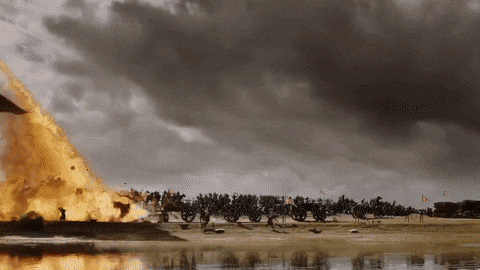
The Dragonpit Summit
After such extraordinary recent events, all sides are trying to figure out what their next move is. Daenerys, once focused on taking out Cersei and restoring rightful Targeryen rule to the Seven Kingdoms, has now seen the army of the dead and understands that this is the only war that matters. Yet, if she invests her forces into fighting the war in the North, she allows Cersei to strengthen her position and reclaim more of Westeros. So, the only way Daenerys can focus on joining Jon in fighting the Night King is if Cersei agrees to a temporary armistice. Even better would be if Cersei agrees to lend her troops to fight in the Great War to Come.
So, Dany, Jon and their team risk it all by traveling to King’s Landing to meet with Cersei. Of course, they do not arrive empty-handed, and they bring the wight that they captured during their raid north of The Wall. Cersei now sees what few others in the world have, and must decide whether she wants to continue her war against Dany for Westeros, or put aside their differences and focus on the much important war to come. After much deliberation, Cersei agrees to a temporary truce and offers to direct her troops north to join in the fight against the dead.
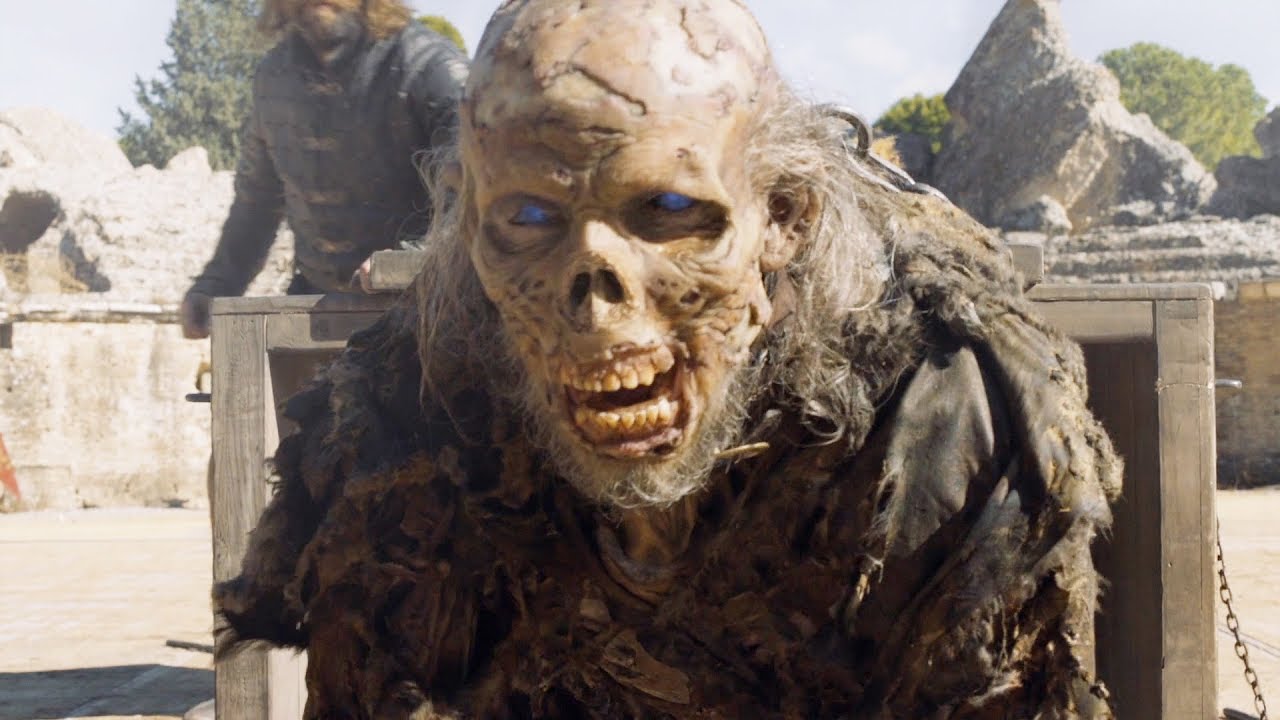
The End is Near
Just as it looks like the good guys humans are banding together to fight the dead, things go a bit haywire and reach an absolute climax as season seven comes to a close. To start, we learn that Cersei was full of sh*t and lied to Jon and Dany when pledging her troops to join the fight against darkness. After they depart, she tells Jaime that she intends to continue to fight against her true enemies, even if it leads to their death. Jaime attempts to reason with her, explaining that if they do not do all they can to fight back the dead, everybody in King’s Landing will eventually die. Yet, Cersei is blinded by the only thing that she has left to live for — revenge against those who have wronged her. No longer able to stand by the madness of his sister, Jaime rides off from King’s Landing, just as the snow begins to fall. Snow, all the way south over King’s Landing? The end must be near…
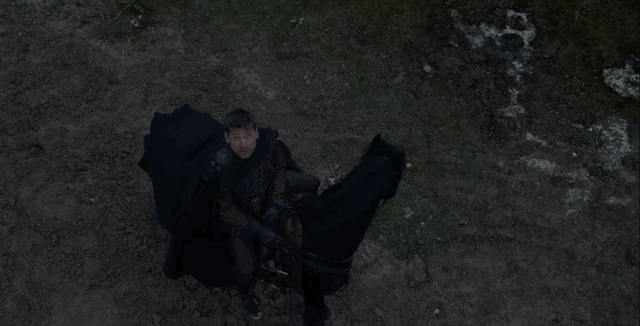

But before season seven comes to a close, we see the two elements that this story has already centered around, Fire and Ice, take center stage and set up the Great War to Come in season eight.
First, we see Fire emerge stronger than ever, personified by who we once believed to be Jon Snow, but now know to be Aegon Targaryen. Thanks to one of Bran’s visions, for some time now, we have known that Jon was birthed by Lyanna Stark after being impregnated by Rhaegar Targaryen. This was an absolutely massive reveal in season six, when Bran sees a young Ned Stark sitting over his dying sister, Lyanna, with baby Jon in hand. The implications were huge as we realized that Ned had sacrificed his honor, the thing he valued most, and pretended to have an extramarital affair in order to explain the birth of his bastard son, Jon. This false understanding of who Jon really was led to a series of events, too long to lay out here, so the reveal of who Jon’s true identity was massive. But even with Bran’s visions and wisdom, he only got half the story — the half that allowed him to understand that Jon’s parents were Rhaegar Targaryen and Lyanna Stark. But, since Rhaegar was married to Elia Martell, Bran incorrectly assumed that Jon was a bastard born out of wedlock, and since he was born in the south, his bastard name would be Jon Sand instead of Jon Snow (each region of Westeros has a different last name that bastards take, in the North it’s Snow, in the south it’s Sand, etc).
However, there was another half to this story that even the all-knowing Bran had not figured out. Earlier in season seven, Gilly was reading through an old Maestar’s record at the Citadel, and she came across a passage that talked about a Maestar performing an annulment for Prince Rhaegar Targaryen and performing a secret wedding ceremony to another. Unknowingly, Gilly came across a passage that contains one of the most confidential and important secrets across the entire continent of Westeros — one that changes everything. Gilly uncovers the fact that Prince Rhaegar annulled his marriage to Elia Martell, and then remarried to Lyanna Stark in a secret wedding ceremony.
The implications of this reveal are massive. First, Robert’s Rebellion was built upon a complete lie. As we know, Robert was in love with Lyanna Stark, and launched his rebellion against the Targaryens primarily under the premise that Rhaegar had kidnapped his beloved Lyanna, rode off with her and raped her. He joined forces with her brother, Ned, and together they led much of the North to King’s Landing to overthrow The Mad King and usurp the Targaryen dynasty. Before taking the Iron Throne for himself, Robert killed Rhaegar during The Battle of the Trident. With Lyanna and Rhaegar both dead, the truth of Jon’s parents could only be found within the pages of this old Maestar’s private journal, discovered by the unlikeliest of characters.
Perhaps more important than the fact Robert’s Rebellion was built upon a lie is what this reveals about Jon’s true identity. He is not a bastard as Bran assumed, but rather the true and lawful son of Rhaegar and Lyanna who were in love and legally married. As we later hear when Bran revisits his vision, Jon’s true name is Aegon Targaryen. No big deal that he’s named after the man that conquered the Seven Kingdoms and the first Targaryen king to rule over Westeros. This also makes him one of the first, if only, throughout history to have both Targaryen and Stark blood — some would argue a mix of Fire and Ice. Most of all, this means that Jon (or Aegon), not Daenerys, is the rightful heir to the Iron Throne (Rhaegar was the older brother of Daenerys, so after their father, The Mad King died, the throne would have gone to Rhaegar, not Daenerys. And after Rhaegar, it would go to his son, Jon/Aegon). Of course, Jon still does not know any of this, but it now appears only a matter of time until Bran/Samwell fill him in on who he really is.
In the Thrones world, Targaryens equal fire, so learning that Jon is one of the last remaining Targaryens, and arguably the most powerful, amplifies the existence of Fire heading into the final season. But the season does not end without Ice making its counterpunch. In the final scene of the season, we see the army of the dead reemerge once more, this time looking to get past The Wall, something they’ve been unable to do for thousands of years since The Long Night.
In a story that centers around Ice and Fire, evil and good, light and dark, it is The Wall that symbolizes the fine line between these ever-opposing forces. The Wall was not built yesterday; or a few years ago; or even a few hundred years ago. The Wall was built 8,000 years ago when The Children of the Forest, The First Men and the Giants all came together to fight for their survival against the White Walkers. For 8,000 years, The Wall was more than a structure that kept out the dead — it was an indestructible symbol that divided good from evil, light from dark, Ice from Fire. And now, we have just seen that wall fall. A structure that protected the realm for thousands of years has finally been breached, and now, nobody is safe.
As the Night King rides on the back of his undead dragon, Viserion, he unleashes a fury of icy fire that is able to easily reduce a portion of The Wall to rubble. What’s important to remember is that The Wall was constructed using powerful magic from The Children of the Forest — magic that has kept the White Walkers out for thousands of years. And since The Wall is more than just ice and is also made up of this magic, it would take more than just ordinary force to destruct The Wall. Which is why the Night King, on the back of a dragon — representing the union of fire and ice — is able to destroy a good chunk of The Wall. Seeing this also again reminds us of the ties that the Night King has to the Children of the Forest. After all, it was the Children that created the Night King in the first place and he has shown to carry some of their magical powers. It then makes perfect sense that he is the one who is able to counteract the power of their magic used to build The Wall as he tears it down.
Some Final Thoughts & Theories
As we reflect back upon the last seven seasons, there are so many storylines that feel unfinished, characters whose destinies have not been revealed, and plot-points that lend to certain theories which or may not come to fruition in the final season. I thought I’d call out just a few that I have found most intriguing.
What Does the Night King Really Want?
I often get asked who I think is going to win the war and how this story will end. I generally respond that I think darkness will prevail. Unlike most stories, George R.R. Martin has a proclivity for reminding us that in real life, good does not always win and life can be full of darkness and hardship. For that reason, I am intrigued by the idea of evil prevailing and the “good guys” not necessarily winning.
But this leads me to the realization that the Night King and White Walkers are not necessarily evil. Sure, that’s how we’ve perceived them thus far — I mean anytime you have an army of zombies led by an evil Night King trying to destroy humanity, you are going to assume they’re pretty evil, right? But that’s a simple interpretation of what we’ve actually witnessed. If you go a layer or two deeper, you start to realize that things are not that simple, and the line between good and evil may not be that clear.
For starters, the Night King did not choose to be the Night King. He was not born into being the Night King, nor did he decide for this to be his life. It’s important to remember that he was a human, who against his will, was turned into the Night King. And by who? By the Children of the Forest, the ones who are supposed to be “the good guys.” You can rewatch the scene below in which the Night King is created. Of course, we don’t know exactly why The Children did this and what they were actually trying to achieve. Presumably, they were not trying to create the Night King, but who knows. We also don’t yet know who this human was and why he was chosen — was he just a random sacrifice or perhaps somebody more significant? From the context, we can see this happened at a weirwood tree in the North, so it’s safe to assume he was a Northerner, perhaps even a Stark? If you believe that, it leads to further theories around the close ties between the Night King and the Starks, and the possibility that the Night King could even be Bran Stark, who we now see as the Three-Eyed Raven. But that’s another theory for another day.
So, as we saw above, the Night King didn’t set out to become the Night King. He was turned into what he became, and once he became it, presumably has some objective he is trying to accomplish. I do not believe for a second that it’s as simple as killing humans for the sake of killing humans. I believe there is something greater he is driven to accomplish. Perhaps he is fighting for the preservation of his people, much the same way the humans are. Perhaps to survive they must get south of The Wall to accomplish some unknown feat. It’s hard to know exactly what his motivation is, but without knowing, and considering the fact he was forced into becoming The Night King, can we really call him evil? My money says that in the final season, we will learn a lot more about who he is and what he is trying to achieve, and that perhaps our perception of him being evil will change. George R.R. Martin has an uncanny ability to constantly force us to reassess our perception of a given character (i.e. consider how many times we have reassessed how we felt about a character like Jaime? First he was bad, then showed signs of being good, then got sucked back into Cersei’s games, and now has reemerged as a potential good guy). I think something similar might happen with the Night King, and we might be reminded that the lines between good and evil can often be unclear.
Who is the Prince That Was Promised?
As we’ve talked about many times throughout the seven seasons, during the Long Night, Azor Ahai was an ancient warrior that led the fight against darkness and saved humanity from the White Walkers. He was known as The Prince That Was Promised and there is a prophecy in the religion of the Lord of Light that has stated The Prince That Was Promised will be reincarnated to fight back the darkness once more. In the first few seasons of the show, Lady Melisandre incorrectly believed Stannis to be The Prince That Was Promised, but things did not end up well for him (although we never actually saw him die, and it’s still theoretically possible he is alive). So, the question remains, will The Prince That Was Promised once again reemerge? This question may never get answered outright, but it seems like it may be either Jon or Daenerys. One interesting callout: In the second episode of season seven, Daenerys is speaking in High Valyrian with Lady Melisandre, who once again references The Prince That Was Promised, the person that will fight back the darkness once more. Missandei, whose native language is Valyrian, interjects and corrects them, stating that the word they are using in Valyrian actually has no gender, meaning it can be a Prince or Princess. This of course leads us to believe that perhaps Daenerys could be the Princess That Was Promised. (See video below, starting at 1:10).
What’s Up with the Direwolves?
The Starks’ direwolves were very present in the first few seasons, until things started to go haywire for the Starks, and so too for their wolves. You probably don’t recall exactly where things left off and which wolves are still out there. Well, sadly, only two of the original six direwolves are alive, and I’m guessing they’ll have a role to play in the final season. With everything else going on in the show, and the wolves being absent for the better part of the last few seasons, it’s fair that we’ve forgotten about them. But don’t overlook their significance as the story comes to an end. Remember, direwolves are not just big wolves — there is a magical connection they have to their Stark owners and they should reemerge into the story in the final season.
The two wolves left are Nymeria and Ghost, belonging to Arya and Jon, respectively. Last season, Arya actually encountered Nymeria, who had grown quite large and was leading a pack of pretty ferocious wolves. It’s fair to assume that this pack of wolves will fight for Arya/the Starks at some point in the final season. We last saw Jon’s wolf, Ghost, before The Battle of the Bastards, at which point Jon held Ghost back to avoid him being harmed. The assumption is that Ghost has been hanging around Winterfell ever since, though we have not seen him.
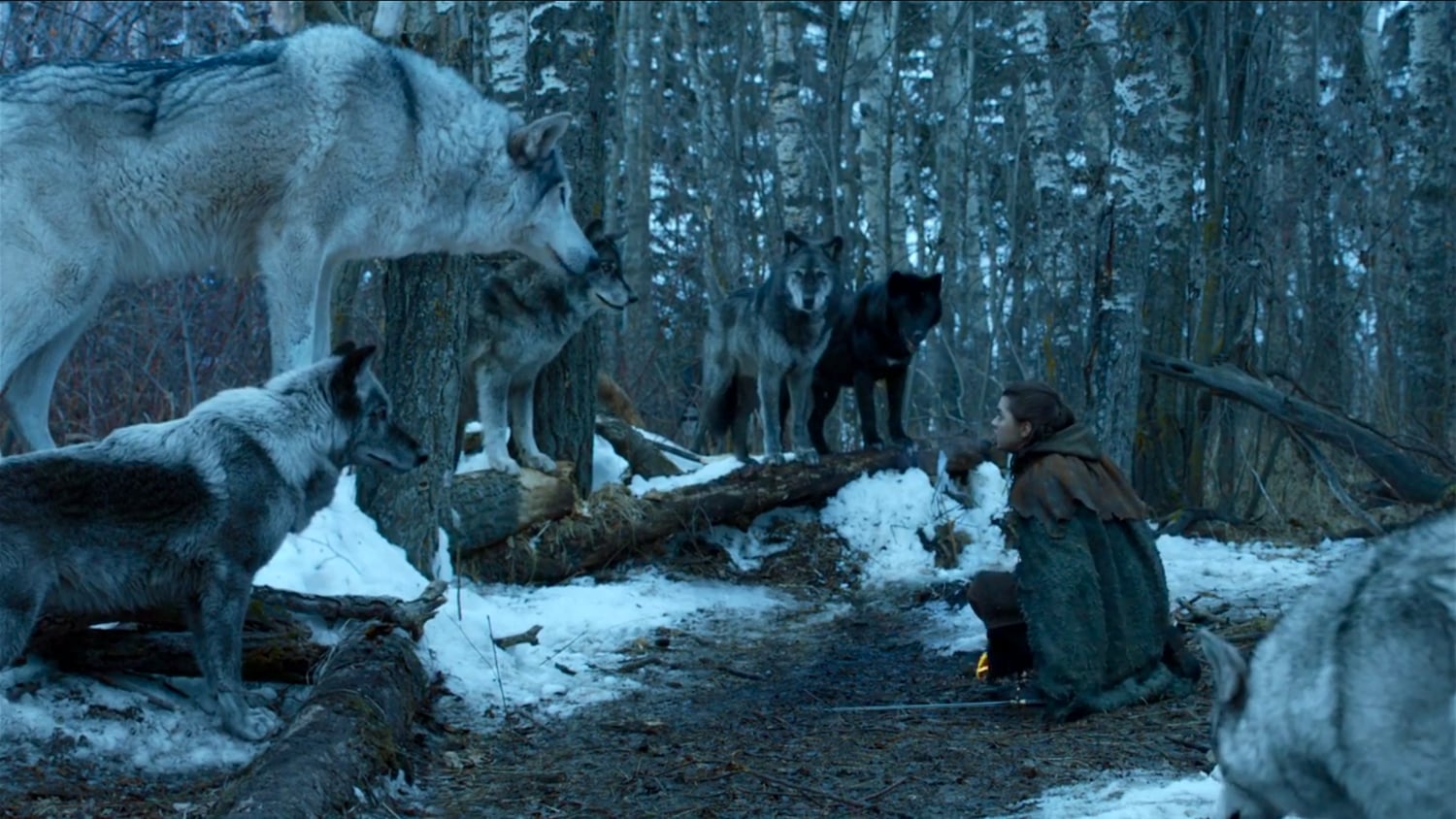
One other interesting thought to consider is that thus far, the Starks that have been killed who have wolves that have also been killed, have been killed by the same people. Robb Stark was killed by the Freys at the Red Wedding, as was his wolf, Greywind. Rickon Stark was killed by the Boltons, as was his wolf Shaggydog. If we are to believe this pattern will hold true, this means that Bran, if killed, will die at the hands of the White Walkers (who killed Summer when they attacked the cave he was in with the Three-Eyed-Raven), and Sansa will die at the hands of a Stark (Ned swung the sword that killed Lady after Cersei demanded Lady’s death for attacking Joffrey, even though it was actually Arya’s wolf, Nymeria, that attacked Joff).
Samwell As The Final Storyteller?
When Samwell arrived at The Citadel in season six, I was fascinated by those giant astrolabes hanging in The Citadel. What were they? What purpose did they serve? Most viewers probably did not realize that we have been seeing those astrolabes since the very first episode, and in every single episode since. Yes, that’s right, they appear in the opening credits of every episode. As you can see from the image on the right below, the top half shows a more detailed view of the astrolabe from the Citadel, and the bottom right shows a strikingly similar image from the opening credits. This is not something that can be overlooked, and upon digging deeper, it lends some very interesting insights as to what Sam’s role in this story may end up being. One thought is that if darkness prevails and humanity perishes, there will need to be somebody left to tell this story — the very story that we are watching unfold before our eyes. We know Sam has always been obsessed with books, preserving history and storytelling, and it just may be Samwell Tarly that is telling the very story we are witnessing today. For more color, read the full post on this theory here.
Significance of the Spirals We’ve Seen
Throughout the show, we’ve seen a specific spiral design that seems to be shared by both The Children of the Forest and the White Walkers. It’s unclear what these spirals signify, but given that some of the images we’ve seen date back thousands of years, and that they’re shared by two of the most significant/magical groups of beings in the show, I am willing to bet it’s something significant. It may even lend a clue to the link between The Children and the Night King. You can see below for a few examples of these spirals that we’ve seen, and read the episode recap here that explains this theory in much greater detail.
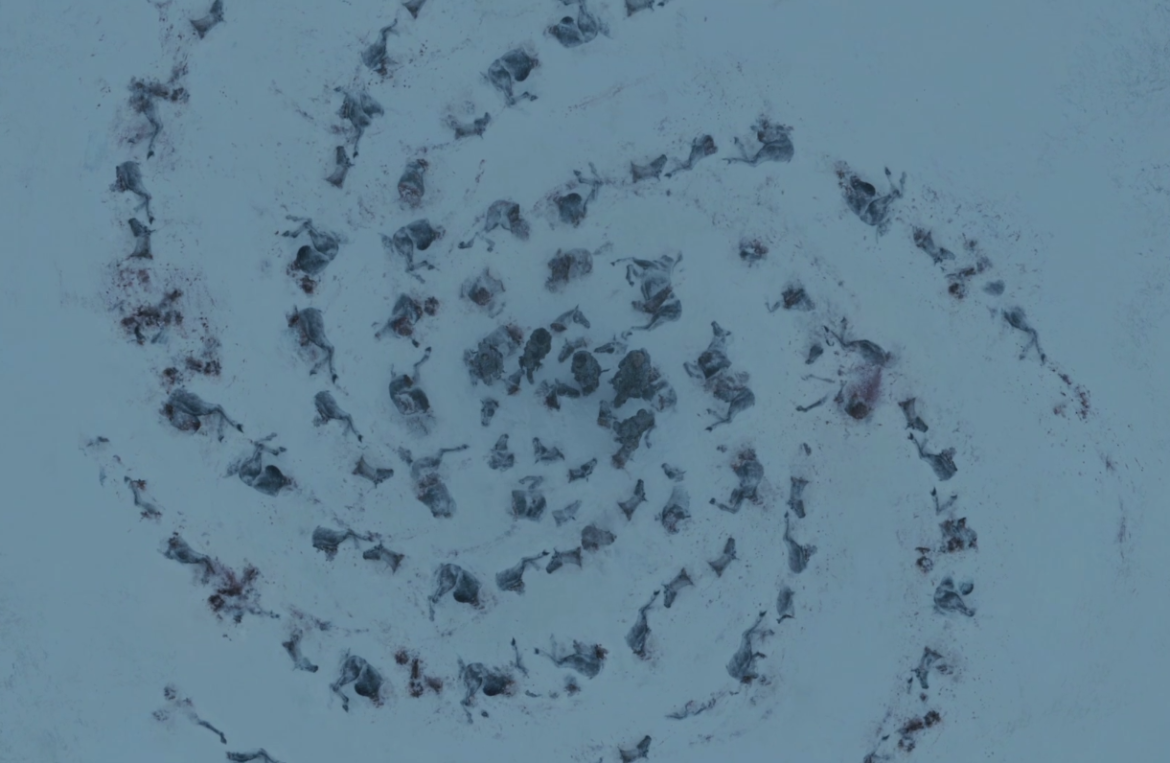
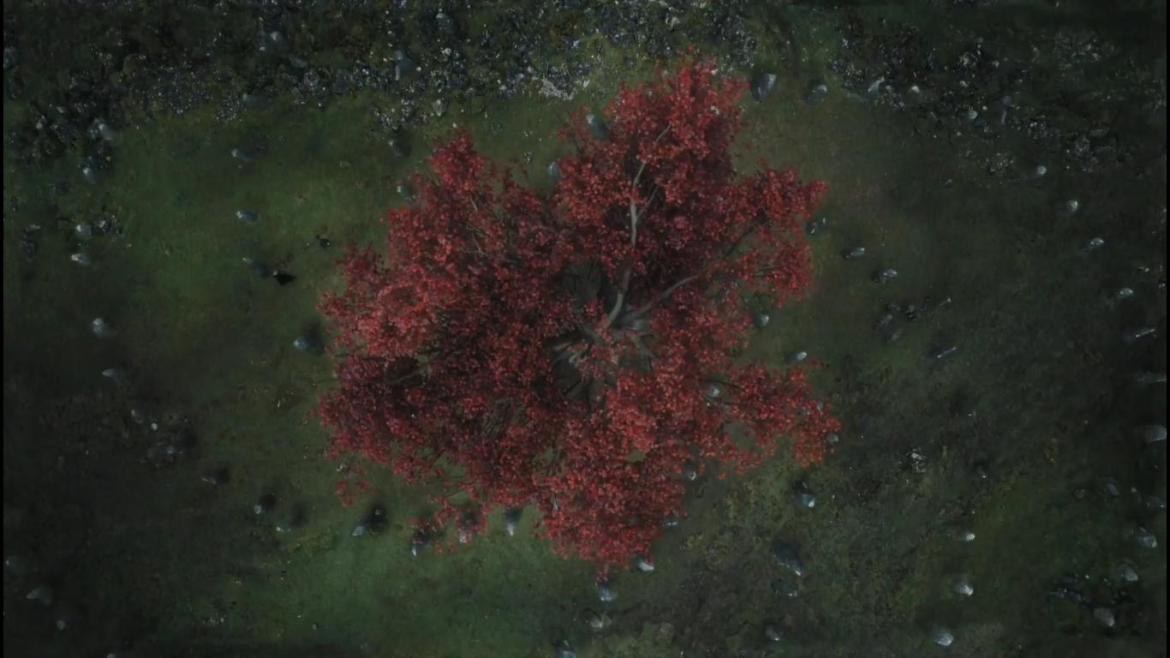
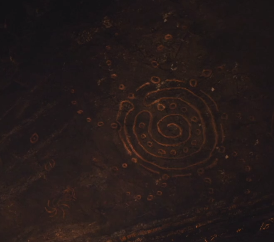
Are Syrio Forell and Jaqen H’ghar the Same Person?
Another theory we’ve talked about for many seasons on this blog, and another burning question that may or not get answered in the final season of this story. But there’s a lot of credence to the fact that Syrio Forell, Arya’s Braavosi fighting instructor, could have been Jaqen H’ghar all along. For starters, back in season one, the last we see of Syrio is when he is attacked by Lannister guards and Arya is forced to flee. It is assumed that he will be killed, but we never see him die, keeping the door open for the fact he may be alive.
After Arya flees, she cuts her hair to look like a boy and joins a group heading North. In that group, there are several men locked up in a cage, one of which is Jaqen H’ghar. If you think about this for a moment, it makes no sense. We go on to learn that Jaqen H’ghar is one of the most cunning, nimble and outright magical assassins in all of the land. We seem him perform incredible feats that few others could. Yet, this same man finds himself locked up in a rickety cage as a prisoner? It doesn’t add up, not one bit. An entirely more plausible explanation would be that Syrio Forell was Jaqen H’ghar the whole time, just wearing the face of Syrio. He never got killed and was able to escape after Arya ran away, and to avoid being detected, he changed his face to that of the Jaqen we saw throughout most of the show, and allowed himself to appear as a prisoner. He continued to look over Arya as she continued north, and at the right time, revealed himself to Arya as the Faceless Man we came to know. For several more years, he would continue to train Arya, just as Syrio (who was really Jaqen) had been doing since the very beginning in King’s Landing. If you compare the two men, they are quite similar. Both were excellent fighters, both hailed from the secret land of Braavos, both spoke of the Many-Faced God and saying no to death. The list goes on. Again, who knows if this is something that will be addressed in the final season, but at minimum, it would be great to see Jaqen reemerge before the story comes to an end.
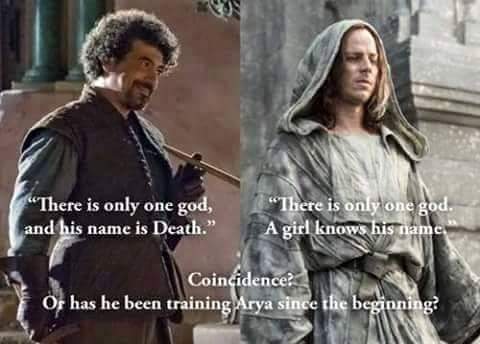
What Did Varys Hear in the Flames?
Back in season six, Varys and Tyrion are visited by The High Red Priestess, Kinvara, one of the highest ranking officials of the Lord of Light. Though her appearance was brief, she dropped a pretty big question that has never been answered. As Varys is typically skeptical of religion, he questioned The Lord of Light, to which Kinvara references a voice that Varys heard in the flames when he was castrated as a young boy. Usually cool and collected, Varys’ face becomes flush with fear, making it clear that he knows what she is talking about. Will we ever learn what Varys heard in the flames? As we’ve highlighted many times, it’s rare that Thrones inserts these kinds of plot-points if not to come back to them at a later point in time, so I would hope to learn more about this. But then again, with only a handful of episodes left, it’s entirely possible that we never learn what Varys heard in the flames.
Other Odds and Ends
- The Three-Eyed Raven told Bran that he will never walk again, but he will fly. Will we see Bran fly? Perhaps he will warg into a dragon?
- Is Stannis definitely dead? Seems like yes, but I’m always wary when we don’t see the character actually die.
- What is the connection between Bran and the Night King? Every time the Night King sees Bran in one of his visions, Bran is pulled from his vision. It seems like there is a deeper connection between the two.
- In season seven, I wrote an interesting theory about The Eye of the Giant. You can read more about that here.
- More recently, I wrote a theory on the significance of what’s beneath the crypts of Winterfell. The teaser for the upcoming season focused on the crypts of Winterfell, so I think it will have significance on the season eight. You can read that here.
That’s it folks. Enjoy the countdown to season eight and savor each minute!
